Friday, 9th December 2022
RBI’s monetary policy review - Edukemy Current Affairs
In News:
- RBI hikes key policy rates amid uncertainties in world economies
About the News:
- The Reserve Bank of India (RBI) has recently hiked the policy repo rate for a fifth consecutive time by 35 basis points to 6.25% post-Monetary Policy Committee (MPC) review meeting.
- Currently, the MPC meets six times in a financial year, which is every two months for which the schedule for the entire financial year is announced in advance.
- RBI has hiked the key interest rate after deliberating on the economic situation and especially inflation which continues to stay above its tolerance band.
- The RBI has however given a positive outlook for the Indian economy's performance in the face of global challenges like the war in Ukraine and the Covid-19 pandemic.
- Although the recent policy announcement was viewed as "hawkish" by the majority of observers, the increase in the repo rate has been hailed in line with market expectations.
Monetary policy reviews:

- About: RBI in India is entrusted with the responsibility of devising monetary policy for the economy of India.
- Monetary Policy Committee (MPC): It was formed under the amended RBI Act, 1934 which empowered the central government to constitute a six-member committee which was first constituted in 2016.
- Objective: The primary objective of these policy reviews is to maintain price stability while keeping in mind the objective of growth.
- Mandate: Policy Rate decided by MPC to achieve the inflation target is binding on the RBI.
- Members of MPC: It consists of:
- RBI Governor as its ex officio chairperson
- Deputy Governor in charge of monetary policy
- An officer of the Bank to be nominated by the Central Board,
- Three persons appointed by the central government.
- Inflation targeting: The central bank is supposed to target a 4% retail inflation level in general and flexibility of up to 6% or falling to 2% in any particular month.
- Increasing repo rate: When inflation runs high, RBI raises the repo rate which incentivises savings and disincentives expenditure, thus curtailing overall demand and GDP resulting in reduction the inflation rate.
- Decreasing repo rate: RBI cuts the repo rate which boosts demand and economic output in the times of weak economic activity.
- Importance: Although some degree of inflation is desirable as it promotes economic activity, it sometimes backfires if purchases are differed for cheaper prices which eventually leads to contraction in the economic activity and
|
Highlights of RBI Monetary Policy |
|
1. Repo rate increased by 35 basis points to 6.25%. |
|
2. Inflation is expected to be above 4% in the next 12 months. |
|
3. FY23 GDP growth forecast lowered to 6.8% from 7% earlier |
|
4. CPI inflation forecast raised to 6.6% from 6.5% |
|
5. FDI inflows rose to $22.7 billion in April to October 2022 from $21.3 billion in corresponding period last year |
|
6. Forex reserve has gone up from USD 524 billion (October 21) to USD 551.2 bn |
|
7. Indian rupee has appreciated by 3.2% during April-October in real terms, while other major currencies have depreciated |
Key terms:
- Inflation: When an economy experiences fast economic growth due to lot of demand in the economy, prices rise or inflation surges.
- Retail inflation: It is the inflation (or rise in the general price level) that everyday consumers face.
- Core inflation: It is arrived at by removing the inflation in food and fuel from headline inflation.
- Repo rate: It is the interest rate charged by RBI when it lends money to banks.
Source:
https://indianexpress.com/article/explained/reading-rbis-monetary-policy-review-8312181/
Click the link below to attempt the daily MCQs and the Mains based questions.
Chairman of Rajya Sabha - Edukemy Current Affairs
Why in news?
- Recently, Rajya Sabha (RS)welcomed its new Chairman, Jagdeep Dhankhar.
|
About Rajya Sabha
|
About the Chairman of Rajya Sabha
- The Vice-Presidentis the ex-officio chairman of the Rajya Sabha.
- He is considered as the unchallenged guardian of the eminence and dignityof the House.
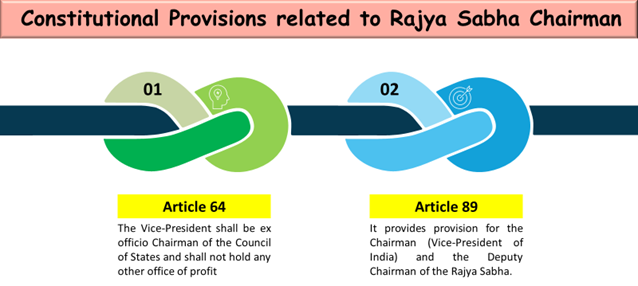
Powers
- The 10th Schedule of the Constitution empowers the Chairman to determines the question as to disqualification of a member of the Rajya Sabha on the ground of defection;
- He is empowered to adjourn the House or to suspend its sitting in the event of the absence of quorum.
- As Insofar as matters in or pertaining to the House are concerned, it is the responsibility of the Chairman to interpret the Constitution and rules. No one can disagree with the interpretation by the Chairman of any argument or controversy.
- It is mandatory to receive the consent of the Chairman to raise a question of breach of privilege in the House.
- All the Parliamentary Committees (whether set up by the Chairman or by the House) work under the direction of the Chairman.
- The members to various Standing Committees and the Department-related Parliamentary Committees are nominated by him.
- He is the Chairman of the Business Advisory Committee, the Rules Committee and the General Purposes Committee.
Removal
- He can only be removed from his position as vice president of India before being removed from his position as chairman of the Rajya Sabha.
- The Vice-President cannot serve as the chairman of the house while the resolution to remove him is in effect, although he may still be present.
Key Points regarding Vice President of India
- Second highest constitutional office in India; occupies 2nd place in warrant of precedence; serves for a five-year term, but can continue to be in office, until the successor resumes office (irrespective of the expiry of the term).
Qualification:
- Must be a citizen of India
- Must have completed 35 years of age
- Most not hold any office of profit
- Qualified to be elected as member of Rajya Sabha
Election
- Elected indirectly by Electoral College, which consists of both elected & nominated members of Rajya Sabha and elected members of Lok Sabha → (State government do not participate in the election of Vice President)
- Elections to Vice President are held in accordance with system of proportional representation by means of single transferrable vote & voting via secret ballot.
- Supreme Court has final & exclusive jurisdiction for resolving disputes & doubts relating to election of Vice President
Removal
- He can resign from his office by submitting his resignation to the President of India. The resignation comes into effect from the day it is accepted.
- Greater than 50% of (Total membership – Vacancy) & agreed upon by simple majority i.e. greater than 50 % of total voting members, of the Lok sabha.
- Prior to passing the resolution in Rajya sabha, a 14 days’ notice should be served to him
- A formal impeachment is not required for his removal as in case of President.
Content Source Link:
https://indianexpress.com/article/india/parliament-winter-session-rajya-sabha-welcomes-jagdeep-dhankhar-its-new-chairman-8312156/
https://pib.gov.in/PressReleseDetail.aspx?PRID=1881361
https://timesofindia.indiatimes.com/india/vice-president-jagdeep-dhankhar-officiates-as-rajya-sabha-chairman-winter-session-commences/articleshow/96050010.cms
https://m.economictimes.com/news/india/vice-president-jagdeep-dhankhar-officiates-as-rajya-sabha-chairman-winter-session-commences/articleshow/96049958.cms
Click the link below to attempt the daily MCQs and the Mains based questions.
Wildlife Protection (Amendment) Bill 2022
In news
The Wild Life (Protection) Amendment Bill, 2022, which seeks to strengthen the protection of endangered species and enhance punishment for illegal wildlife trade, has been passed in the Rajya Sabha by a voice vote.
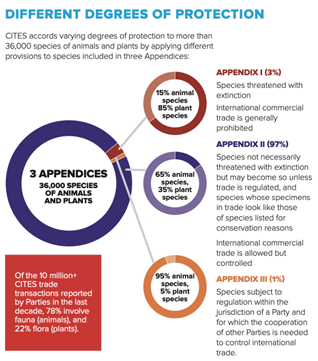 Key features of Amendment Bill
Key features of Amendment Bill
- CITES: The Bill seeks to implement certain provisions of the Convention on International Trade in Endangered Species of Wild Fauna and Flora (CITES), relating to species classification, and regulating the trade of all listed specimens through permits.
- Rationalising Schedules: The Bill reduces the total number of schedules to four (from current six ) by:
- Reducing the number of schedules for specially protected animals to two (one for greater protection level)
- Removing the schedule for vermin species, and
- Inserting a new schedule for specimens listed in the Appendices under CITES (scheduled specimens).
- Obligations under CITES: The Bill provides for the central government to designate a:
- Management Authority, which grants export or import permits for the trade of specimens, and
- Scientific Authority, which gives advice on aspects related to the impact on the survival of the specimens being traded.
- Invasive alien species: The Bill empowers the central government to regulate or prohibit the import, trade, possession or proliferation of invasive alien species.
- Control of sanctuaries: The present act entrusts the Chief Wild Life Warden to control, manage and maintain all sanctuaries in a state. The Bill specifies that the actions of the Chief Warden must be in accordance with the management plans for the sanctuary.
- Conservation reserves: Currently, state governments may declare areas adjacent to national parks and sanctuaries as conservation reserves. Now, the Bill empowers the central government to also notify a conservation reserve.
- Surrender of captive animals: The Bill provides for any person to voluntarily surrender any captive animals or animal products to the Chief Wild Life Warden. No compensation will be paid to the person for surrendering such items. The surrendered items become the property of the state government.
- Penalties: The Act prescribes imprisonment terms and fines for violating the provisions of the Act.
- State Board for Wild Life: The 2021 Bill empowers the State Board for Wild Life to constitute a Standing Committee, for exercising certain delegated powers and duties.
Concerns associated with Amendment
- The Standing Committee observed that amending the Biological Diversity Act, 2002 would be the most appropriate way of implementing CITES, as it observed that the approach under the Bill will make the principal Act complicated and might introduce contradictions.
- The Committee noted that the Standing Committee will be packed with official members, and may end up being a rubber stamp for faster clearances of projects.
- The Bill exempts the transfer of certain live elephants from the permission requirement. To discourage private ownership and trade in elephants, the Committee recommended that this exemption should be removed.
Source:
Rajya Sabha clears Wildlife Bill, Minister promises to protect elephants
Image source:
https://cites.org/sites/default/files/I/Brochure_UNEP_CITES_eng.pdf
Click the link below to attempt the daily MCQs and the Mains based questions.
Cyclone Mandous: Threat to Indian Coast
In News
According to India Meteorological Department (IMD), Cyclone Mandous is expected to cross India’s coast between Puducherry and Sriharikota, resulting in heavy rainfall in Tamil Nadu and neighbouring area
About Cyclone Mandous:
- It is a tropical cyclone formed over southeast Bay of Bengal. It is expected to bring heavy rainfall over Tamil Nadu, Puducherry and adjoining areas.
- The name has been suggested by the United Arab Emirates.
- The IMD has predicted that the storm may move west-northwest and cross north Tamil Nadu, Puducherry and South Andhra Pradesh, with a wind speed of 70 kmph at around midnight of December 9.
What is a cyclone?
- A cyclone is a low-pressure system that forms over warm waters. Essentially, it is a system of high-speed winds rotating around a low-pressure area, with the winds blowing counterclockwise in the Northern Hemisphere and clockwise in the Southern Hemisphere.
- Tropical Cyclones are known by different names in different regions
- Cyclones in the Indian Ocean
- Hurricanes in Atlantic
- Typhoons in Western Pacific in the South China Sea
- Willy-Willies in Western Australia
- The conditions favourable for the formation and intensification of tropical cyclones are:
- Large sea surface with a temperature higher than 27° C;
- Presence of the Coriolis force enough to create a cyclonic vortex
- Small variations in the vertical wind speed;
- A pre-existing weak low-pressure area or low-level-cyclonic circulation is a must for cyclone formation in the tropics
- Upper divergence above the sea level system
Why are cyclones more frequent on the Eastern coast of India as compared to the western coast?
- Surface sea temperatures and humidity are directly related to the formation of cyclones. Since the Bay of Bengal receives high average rainfall, the possibility of cyclone formation is also high.
- Winds over the Bay of Bengal are more sluggish than those the Arabian Sea, thus the winds fail to reduce the surface temperature of the sea.
- Tropical depressions, which are the primary reason for the monsoon rains that India receives is also the reason for the formation of cyclones.
- The Bay of Bengal also serves as a medium for transferring cyclonic winds from other water bodies as the lack of landmass in the basin propels the cyclone to move towards the Indian coastline.
- The inflow of fresh water from the Brahmaputra and other rivers moderates the surface temperature of the Bay of Bengal, making it favourable for tropical depressions.
How are cyclones named?
- Cyclones that form in every ocean basin across the world are named by the regional specialized meteorological centres (RSMCs) and Tropical Cyclone Warning Centres (TCWCs). There are six RSMCs in the world, including the IMD, and five TCWCs.
- A group of nations called WMO/ESCAP (World Meteorological Organization/United Nations Economic and Social Commission for Asia and the Pacific), which comprised of 13 nations around the Bay of Bengal and the Arabian Sea, decided to start naming cyclones in the region.
- After each country sent in suggestions, the WMO/ESCAP Panel on Tropical Cyclones finalized the list of 169 cyclones with 13 suggestions from each of the 13 countries.
Source:
https://indianexpress.com/article/explained/explained-climate/cyclone-mandous-approaching-here-is-all-you-need-to-know-8313071/
Click the link below to attempt the daily MCQs and the Mains based questions.
Election Deposit - Edukemy Current Affairs
- Context: Recently Gujrat, Himachal Pradesh and Delhi witnessed elections.

- An election security deposit is an amount that is to be deposited with the Returning Officer when a candidate files their
- This is to be submitted either in cash, or a receipt must be enclosed with the nomination paper, showing that the said sum has been deposited on the candidate’s behalf in the Reserve Bank of India or in a Government Treasury.
- This practice is to ensure that only genuinely intending candidates fill the nomination.
- As per section 34 of the Representation of the People Act of 1951 following are the deposit amounts:
|
Election type |
Amount |
|
1. Parliamentary constituency (Lok Sabha and Rajya Sabha) |
Rs 25000 Rs 12500 for SC/ST |
|
2. Assembly or Council Constituency |
Rs 10000 Rs 5000 for SC/ST |
|
3. Presidential and Vice-Presidential elections |
Rs 15000 |
- In case the candidate does not secure 1/6th of the votes polled; the deposit money is forfeited as per RPA 1951.
- In case of Proportional Representation, it would be 1/6th of the total number of valid votes so polled divided by the number of members to be elected.
Source:
https://indianexpress.com/article/explained/explained-politics/to-lose-an-election-deposit-explained-8313766/
https://indiankanoon.org/doc/165215034/
Image source:
https://timesofindia.indiatimes.com/city/shimla/free-conveyance-to-voters-would-be-considered-a-corrupt-practice/articleshow/68428544.cms
Click the link below to attempt the daily MCQs and the Mains based questions.
Electoral Bonds: Reforming Political Funding
- Context: Electoral bonds worth Rs 2 crore were sold between November 9 and November 15.
- To cleanse the system of political funding in the country, electoral bonds were introduced.
- Electoral Bond is a Promissory Note and an interest-free banking instrument.
- A citizen of India or a body incorporated in India is eligible to purchase the bond anonymously.
- Electoral bond is issued/purchased in multiples of `1,000, to 1 crore by the State Bank of India (SBI).
- A purchaser who fulfills KYC norms and makes payments from a bank account can buy electoral bonds.
- EC have a life of only 15 days and can be donated only to the political parties which are
- registered under section 29A of the RPA, 1951 and
- Secured more than 1% votes in the last general election to the House of the People or a Legislative Assembly.
- Electoral Bonds were sold through SBI through 10-day window in January, April, July and October, and an additional 30 days in a year of Lok Sabha polls. Now, additional 15 days of sales in a year of Assembly election have been added after amending the Electoral Bonds scheme.
Source:
https://indianexpress.com/article/india/3rd-tranche-rs-676-cr-poll-bonds-sold-in-november-rs-660-cr-worth-encashed-in-delhi-8314486/lite/
Image source:
https://www.indiatoday.in/magazine/the-big-story/story/20181119-political-funding-who-pays-for-the-party-1384158-2018-11-09
Click the link below to attempt the daily MCQs and the Mains based questions.
CNAP - Edukemy Current Affairs
Context: TRAI floated a consultation paper seeking comments about the potential introduction of Calling Name Presentation (CNAP).
- The feature would provide information about the calling party (similar to ‘Truecaller’ and ‘Bharat Caller ID & Anti-Spam’).
- The idea is to ensure that telephone subscribers are able to make an informed choice about incoming calls and curb harassment by unknown or spam callers.
- Smartphone users, at present, rely on in-built features or third-party apps to mark and tackle spam calls. However, as per the regulator, crowd-sourced data may not be reliable.
- The regulator has proposed four models:
- First model involves each telecom service provider (TSP) establishing and operating a CNAP database of its subscribers.
- Second model, the operator of the calling entity shares its CNAP database with the receiver’s operator.
- The third model - a third party operating a centralised database.
- The fourth model would require that each TSP maintain a CNAP database and retain a copy of a synchronised central database operated by a third party.
- Privacy:
- The models must be in sync with The Digital Personal Data Protection Bill (2022) which has a clause on deemed consent lacking adequate safeguards including sharing of data with third parties.
- Currently, customers accord consent only to their operators by completing the prerequisite KYC formalities for a connection.
Sources:
https://www.thehindu.com/sci-tech/technology/explained-trais-proposal-to-help-callers-identify-spammers/article66218687.ece#:~:text=The%20feature%20would%20provide%20the,by%20unknown%20or%20spam%20callers
Image source: ABP news
Click the link below to attempt the daily MCQs and the Mains based questions.
One District One Product - Edukemy Current Affairs
Context: ODOP initiative has been operationally merged with the ‘Districts as Export Hub (DEH)’ initiative of the DGFT.
- The ODOP Initiative is aimed at fostering balanced regional development across all districts of the country, enabling holistic socio-economic growth across all regions, taking us to the goal of Aatmanirbhar Bharat.
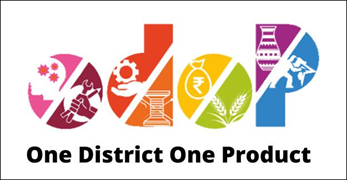
- The ODOP programme intends to essentially transform every district of the country into an export hub by identifying and promoting a product in which the district specialises, and the programme was operationally merged with the DEH initiative around last year.
- DEH is also aimed at converting each district into an export hub, and action plans have been designed to support local exporters/manufacturers in producing / manufacturing identified products in adequate quantity with the requisite quality, for reaching potential buyers outside India, thereby creating economic value.
- Under ODOP-DEH, products/services with export potential have been identified in 733 districts across the country including agricultural and toy clusters and GI products in these districts.
- ODOP/DEH initiatives contribute to the goal of AtmaNirbhar Bharat, vocal for local and Make in India, by providing opportunities for employment, through significantly increasing the manufacturing and exports of identified products
Sources:
https://pib.gov.in/PressReleaseIframePage.aspx?PRID=1881486#:~:text=ODOP%20initiative%20is%20operationally%20merged,in%20reply%20to%20a%20parliament
https://www.financialexpress.com/industry/sme/msme-exim-odop-deh-scheme-ushered-in-average-4x-jump-in-exports-across-states-since-fy19-sbi-ecowrap/2705732/
Click the link below to attempt the daily MCQs and the Mains based questions.
Circular Trading - Edukemy Current Affairs
Why in news? GST Council to discuss circular trading, de-criminalisation
About

- Circular Trading is a term related to share markets.
- Circulating trading involves the members of an exchange for a cartel and trade among themselves in order to create huge false volumes and rigging the price of the shares and thus misleading the common investors into a trap.
- It is different from Insider Trading which involves a corporation’s stock or other securities (e.g. bonds or stock options) by individuals with potential access to non-public information about the company.
https://www.financialexpress.com/economy/gst-council-to-discuss-circular-trading-de-criminalisation/2904937/lite/
Click the link below to attempt the daily MCQs and the Mains based questions.
Animal Welfare Board of India - Edukemy Current Affairs
Why in news? Animal Welfare Board of India issues advisories with regard to stray dogs and pet dogs
 About
About
- The Animal Welfare Board of India was established in 1962, the first of its kind by any government in the world, in accordance with Section 4 of the Prevention of Cruelty to Animals Act 1960.
- It works to ensure that animal welfare laws in the country are followed and provides grants to Animal Welfare Organizations.
- The Board was initially under the jurisdiction of the Government of India's Ministry of Food and Agriculture.
- The Board has 28 members who serve for three years.
- The headquarters were relocated from Chennai, Tamil Nadu, to Ballabhgarh in the Faridabad District of Haryana.
https://pib.gov.in/PressReleaseIframePage.aspx?PRID=1881462
Click the link below to attempt the daily MCQs and the Mains based questions.
Digi Yatra - Edukemy Current Affairs
Why in news? Union Minister for Civil Aviation recently launched Digi Yatra for three airports — New Delhi, Varanasi, and Bengaluru
About

- It is a project conceived to achieve contactless, seamless processing of passengers at Airports, based on Facial Recognition Technology (FRT).
- The project envisages that any traveller may pass through various checkpoints at the airport through paperless and contactless processing, using facial features to establish the identity which would be linked to the boarding pass.
- It provides a decentralized mobile wallet-based identity management platform which is cost-effective and addresses privacy/data protection issues in the implementation of Digi Yatra.
https://www.thehindubusinessline.com/info-tech/how-to/digi-yatra-service-in-india-how-to-register/article66234325.ece#:~:text=Union%20Minister%20for%20Civil%20Aviation,Facial%20Recognition%20Technology%20(FRT
Click the link below to attempt the daily MCQs and the Mains based questions.
ALH Mk- III - Edukemy Current Affairs
Why in news? Coast Guard ALH Mk-III squadron commissioned in Chennai
About

- The ALH Mk-III helicopters, indigenously manufactured by Hindustan Aeronautics Limited (HAL), feature state-of-the-art equipment.
- It includes advanced radar as well as electro-optical sensors, Shakti engines, a full glass cockpit, a high-intensity searchlight, advanced communication systems, an automatic identification system as well as search-and-rescue homer.
- This feature enables the helicopter to undertake maritime reconnaissance as well as carry out search and rescue at extended ranges while operating from ships, both by day and night.
https://www.thehindubusinessline.com/news/coast-guard-alh-mk-iii-squadron-commissioned-in-chennai/article66209614.ece
Click the link below to attempt the daily MCQs and the Mains based questions.
Hornbill Festival - Edukemy Current Affairs
Why in news? Nagaland kickstarts 10-day-long Hornbill Festival
About
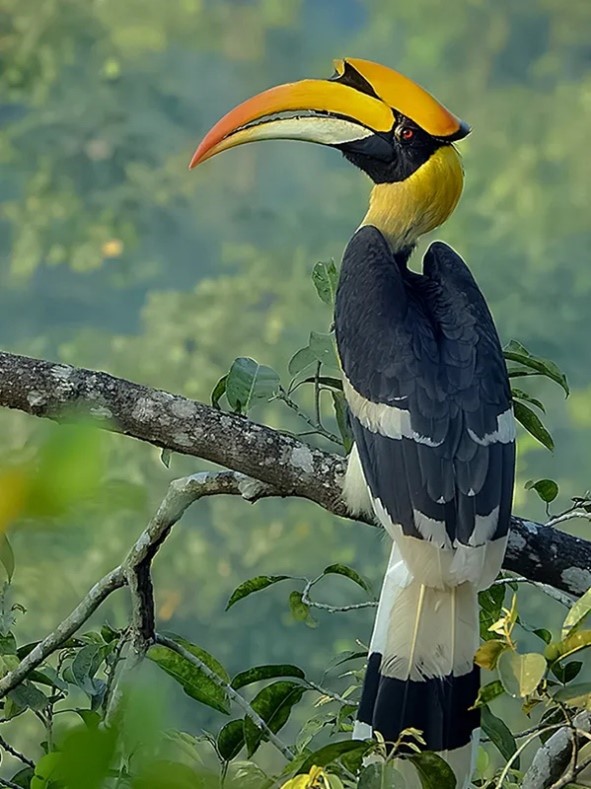
- Hornbill Festival is celebrated in Nagaland to encourage inter-tribal interaction.
- It is one of the largest indigenous festivals organised by the state government of Nagaland to promote tourism in the state.
- The festival is celebrated annually in the first week of December in order to preserve, protect and revive the uniqueness and richness of the Naga heritage.
- The festival is considered the “Festival of Festivals” in Nagaland.
- The festival is named after the bird – Hornbill which is the most revered and admired bird for the Nagas.
https://www.hindustantimes.com/lifestyle/festivals/nagaland-kickstarts-10-day-long-hornbill-festival-101669951216040.html
Click the link below to attempt the daily MCQs and the Mains based questions.
India's Ministry of Coal Introduces National Coal Index (NCI)
Why in news? The Ministry of Coal recently launched National Coal Index (NCI).
About
- It is a price index that reflects the change in the price level of coal in a particular month relative to the fixed base year.
- The base year for the NCI is Financial Year 2017-18.
Compilation:

- Prices of coal from all the sales channels of coal, including import, as existing today are taken into account for compiling the NCI.
- The amount of revenue share per tonne of coal produced from auctioned blocks would be arrived at using the NCI by means of a defined formula.
- NCI is composed of a set of five sub-indices.
https://coal.nic.in/nominated-authority/national-coal-index
Click the link below to attempt the daily MCQs and the Mains based questions.
BIMSTEC as key to a new South Asian regional order: The Hindu
Exam View: BIMSTEC, Bay of Bengal, Regional forums, Bilateral, regional and global grouping involving India or affecting India’s interests etc.
Tags: General Studies – 2 International relations, International Grouping
In News: December 8 is commemorated as SAARC Charter Day. 37 years ago, the South Asian Association for Regional Cooperation (SAARC), an intergovernmental organization, was established.
The SAARC was established with the signing of the SAARC Charter in Dhaka on 8 December 1985. Founding countries—Bangladesh, Bhutan, India, Maldives, Nepal, Pakistan, and Sri Lanka. Afghanistan joined SAARC at the 13th annual summit in 2005. The Headquarters and Secretariat of the Association are at Kathmandu, Nepal.
|
Cooperation with in the framework of SAARC |
Areas of Cooperation |
|
|
Challenges associated with SAARC
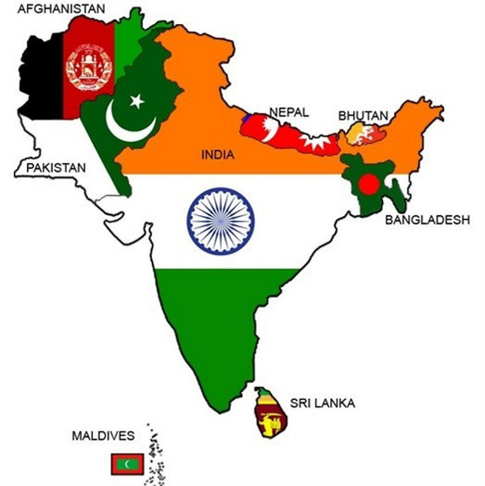
- Low frequency of meetings: More engagement is required by the member states and instead of meeting biennial meetings should be held annually.
- Broad area of cooperation leads to diversion of energy and resources.
- Limitation in SAFTA: The implementation of SAFTA has not been satisfactory a Free Trade Agreement confined to goods, excluding all services like information technology.
- Indo-Pak Relations: Escalated tension and conflict between India and Pakistan have severely hampered the prospects of SAARC.
BIMSTEC
The Bay of Bengal Initiative for Multi-Sectoral Technical and Economic Cooperation (BIMSTEC) is a regional multilateral organisation. Its members lie in the littoral and adjacent areas of the Bay of Bengal constituting a contiguous regional unity.
Out of the 7 members, Five are from South Asia – Bangladesh, Bhutan, India, Nepal Sri Lanka
Two are from Southeast Asia –Myanmar, Thailand
This sub-regional organization came into being in 1997 through the Bangkok Declaration. Initially, it was formed with four Member States with the acronym ‘BIST-EC’ (Bangladesh, India, Sri-Lanka and Thailand Economic Cooperation). It became renamed ‘BIMST-EC’ in 1997, following the inclusion of Myanmar. With the admission of Nepal and Bhutan in 2004, the name of the grouping was changed to ‘The Bay of Bengal Initiative for Multi-Sectoral Technical and Economic Cooperation (BIMSTEC).
Significance of BIMSTEC for India:
Allows India to pursue three core policies:
- Neighborhood First - primacy to the country’s immediate periphery;
- Act East - connect India with Southeast Asia; and the Economic development of India’s northeastern states – by linking them to the Bay of Bengal region via Bangladesh and Myanmar.
- Allows India to counter China’s creeping influence in countries around the Bay of Bengal due to the spread of its Belt and Road Initiative.
- A new platform for India to engage with its neighbours with the South Asian Association for Regional Cooperation (SAARC) becoming dysfunctional because of differences between India and Pakistan.
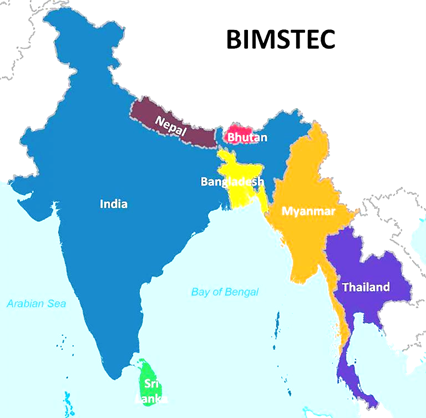
Challenges with BIMSTEC
- Inconsistency in Meetings: BIMSTEC planned to hold summits every two years, and ministerial meetings every year, but only four summits have taken place in 20 years up to 2018.
- Neglect by member states: It seems that India has used BIMSTEC only when it fails to work through SAARC in the regional setting and other major members like Thailand and Myanmar are focused more towards ASEAN than BIMSTEC.
- Broad Focus Areas: The focus of BIMSTEC is very wide, including 14 areas of cooperation like connectivity, public health, agriculture etc. It is suggested that BIMSTEC should remain committed to small focus areas and cooperate in them efficiently.
- Bilateral Issues between Member Nations: Bangladesh is facing one of the worst refugee crises of Rohingyas from Myanmar who are fleeing prosecution in the state of Rakhine in Myanmar. There is a border conflict between Myanmar and Thailand.
- BCIM: The formation of another sub-regional initiative, the Bangladesh-China-India-Myanmar (BCIM) Forum, with the proactive membership of China, has created more doubts about the exclusive potential of BIMSTEC.
- Inadequate Focus on Economic Cooperation: A quick look at the unfinished tasks and new challenges gives an idea of the burden of responsibilities on the grouping.
Way Forward
- Bilateralism: India can successfully use the instrument of bilateralism over regionalism to pursue its interests. Bilateralism is undoubtedly important but it cannot substitute regional or multilateral efforts. Reviving SAARC by infusing political energy into it and updating its dated Charter will be an ideal way forward.
- Flexible ‘BIMSTEC Minus X’ formula: It might allow India and Bangladesh or India and Thailand to conduct their ongoing bilateral free trade agreement (FTA) negotiations under the broader BIMSTEC umbrella. It will enable the gradual and incremental expansion of these binding commitments to other members.
- BIMSTEC should not end up as another SAARC: Member countries should raise the stakes. A high-quality FTA offering deep economic integration would be an ideal step.
- India should explore legal ways: to move successful SAARC institutions such as SAU to BIMSTEC. These steps will give stronger roots to BIMSTEC It will enable erecting a new South Asian regional order based on incrementalism and flexibility.
https://www.thehindu.com/opinion/op-ed/bimstec-as-key-to-a-new-south-asian-regional-order/article66235223.ece/amp/
Click the link below to attempt the daily MCQs and the Mains based questions.
Thames: Biologically Dead to Clean in 60 Years
Background
River Thames which is considered to be one of the world’s cleanest rivers running through a city had been declared “biologically dead” in several stretches, 60 years ago. This model could be imitated for the revival of various rivers in India.
What were the causes of the pollution of the River Thames?

- Expanding numbers of city dwellers since medieval times was a major cause of its pollution.
- Dumping of waste, with leaking cesspits and dumped rubbish reduced many of its tributaries into running sewers.
- Bombings across the city during the Second World War destroyed parts of the sewage network, allowing raw sewage to enter the river.
- Sediments which settled at the river bed due to the widening and slowing down of the Thames across London got contaminated by heavy metals from roads and industry, creating a toxic aquatic environment
- The hot summer of 1858, referred to as the Great Stink, saw high levels of human and industrial waste in the river driving people out of London.
In the 1950s, dissolved oxygen levels in the Thames were at just 5% saturation which could only support a few aquatic invertebrate species, thus it was declared biologically dead.
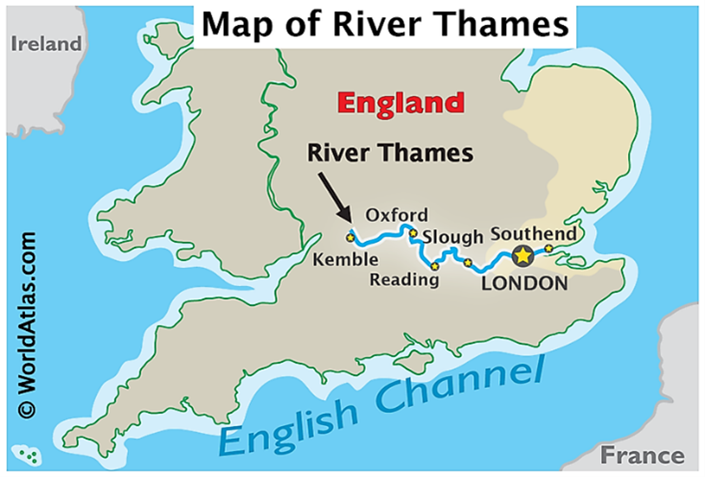 What steps were taken for the revival of the Thames?
What steps were taken for the revival of the Thames?
- Just after the episode of “The Great Stink”, a century of improvements to the sewage network, including upgrading sewage treatment works and installing household toilets led to the revival of the Thames.
- Privatization of water companies under Margaret Thatcher also saw the establishment of the protective National Rivers Authority in 1989, as well as the introduction of biotic monitoring.
- The installation of large oxygenators, or “bubblers”, to increase dissolved oxygen levels, which was later replaced by a self-powered “Thames Bubbler” in 1988 was responsible for maintaining oxygen at a level sufficient to support growing fish populations.
Source:
https://scroll.in/article/1022414/how-the-thames-went-from-being-biologically-dead-to-one-of-the-worlds-cleanest-rivers-in-60-years
Click the link below to attempt the daily MCQs and the Mains based questions.
Share the article
Get Latest Updates on Offers, Event dates, and free Mentorship sessions.

Get in touch with our Expert Academic Counsellors 👋
FAQs
UPSC Daily Current Affairs focuses on learning current events on a daily basis. An aspirant needs to study regular and updated information about current events, news, and relevant topics that are important for UPSC aspirants. It covers national and international affairs, government policies, socio-economic issues, science and technology advancements, and more.
UPSC Daily Current Affairs provides aspirants with a concise and comprehensive overview of the latest happenings and developments across various fields. It helps aspirants stay updated with current affairs and provides them with valuable insights and analysis, which are essential for answering questions in the UPSC examinations. It enhances their knowledge, analytical skills, and ability to connect current affairs with the UPSC syllabus.
UPSC Daily Current Affairs covers a wide range of topics, including politics, economics, science and technology, environment, social issues, governance, international relations, and more. It offers news summaries, in-depth analyses, editorials, opinion pieces, and relevant study materials. It also provides practice questions and quizzes to help aspirants test their understanding of current affairs.
Edukemy's UPSC Daily Current Affairs can be accessed through:
- UPSC Daily Current Affairs can be accessed through Current Affairs tab at the top of the Main Page of Edukemy.
- Edukemy Mobile app: The Daily Current Affairs can also be access through Edukemy Mobile App.
- Social media: Follow Edukemy’s official social media accounts or pages that provide UPSC Daily Current Affairs updates, including Facebook, Twitter, or Telegram channels.



